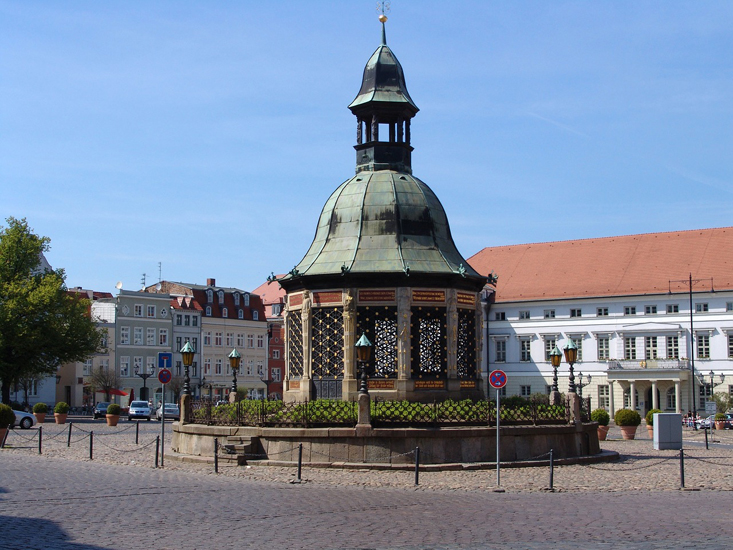Wismar is a city in Mecklenburg-Western Pomerania which lies on the Baltic Sea coast ( Germany ). The historic center was designated a UNESCO world cultural heritage site in 2002 together with the historical core of Stralsund.
The city was established in the 13th Century during a period of Germanic colonisation of Slavic areas. Wismar was first mentioned in a document in 1229. It was part of the Hanseatic League, originally an association of North German merchants, which grew to become a trade network of about 200 ports and inland towns. During the Thirty Years’ War (1618–48) Wismar came under Swedish rule, a status which it kept until 1803. Today, Wismar’s old town contains traces of history going back to the middle ages, including several outstanding brick Gothic churches and old houses.
Access : Coordinates : 53.9, 11.466667 / By train : Wismar’s railway station is near the old town and close to St. Nikolai church. It is about a 5–10 min walk to the market square. There are slow regional trains to Schwerin and eventually Berlin, and in the other direction, to Rostock further east. Change at Bad Kleinen on the Schwerin line for trains to Lubeck and Hamburg. Wismar station on Wikipedia Wismar railway station
By car : Two main Autobahn routes serve Wismar. The A14 arrives from Magdeburg in the south via Schwerin to join the east/west-oriented A20 at Kreuz Wismar. Motorists coming from Schleswig-Holstein and Lubeck on the A20 will exit before Kreuz Wismar at Wismar Sud, while those travelling westwards from Stralsund, Greifswald or Rostock can leave at either junction
Highlights :
- Wasserkunst, Am Markt. Literally “the water art”, this old well structure was built between 1580 and 1602 following a Dutch design ,
- Rathaus and market place, Am Markt. Wismar’s central market square covers 10,000 sq m and is one of the biggest in northern Germany , St. Nikolai, St.-Nicolai-Kirchhof. This stunning brick gothic church dates from the 14th century.
- Heiligen-Geist-Kirche, Lubsche Strasse. This rectangular gothic church emerged in its current form in the 15th century , St. Georgen, St.-Georgen-Kirchhof. One of Wismar’s three main churches and an outstanding example of north German brick gothic architecture ,
- Marienkirchenturm , St.-Marien-Kirchhof. The 80m-high tower is visible for miles. , Wassertor, Spiegelberg/Am Hafen. The “Water Gate” is the only survivor of five medieval city gates, linked by a 4m high city wall , Baumhaus, Alter Hafen. This rectangular 18th century building takes its name from the tree trunks that were used to block the harbor entrance at night or when the city was under threat.
Activities : Explore the Altstadt on foot. Wismar’s old town is full of history and picturesque charm. If your feet get tired on cobblestones, take a break in one of the many cafes and bars, or refuel with a smoked fish roll in the old harbor. The tourist office operates guided city tours in a small electric bus that take about 50 minutes, departing every hour between 10AM and 5PM (April–October) and 11AM to 3PM (November-March). Tickets cost €9 for adults, €4.50 for children/students/pensioners.
Harbor cruise , Am Hafen. Several companies offer trips around the harbor and Wismar bay. Details available at the quayside. Wismar has both a working commercial harbor and a shipyard, alongside the leisure boats, so there is plenty to see. Some boats run excursions to the island of Poel during summer months.
Go next : Town of Rostock – Warnemünde / Stralsund / Greifswald / Rügen and Hiddensee / Usedom Island

